The side event “Youth at the Forefront: Advancing Technology for Sustainable Agrifood Systems,” organized by Tsinghua University in collaboration with international partners, served as an important platform for dialogue and cooperation during the 2025 World Food Forum (WFF) at FAO headquarters in Rome. Bringing together participants from UN agencies, government departments, academic institutions, and youth organizations, the event fostered in-depth exchanges on how digital innovation and youth leadership can drive the sustainable transformation of agrifood systems.
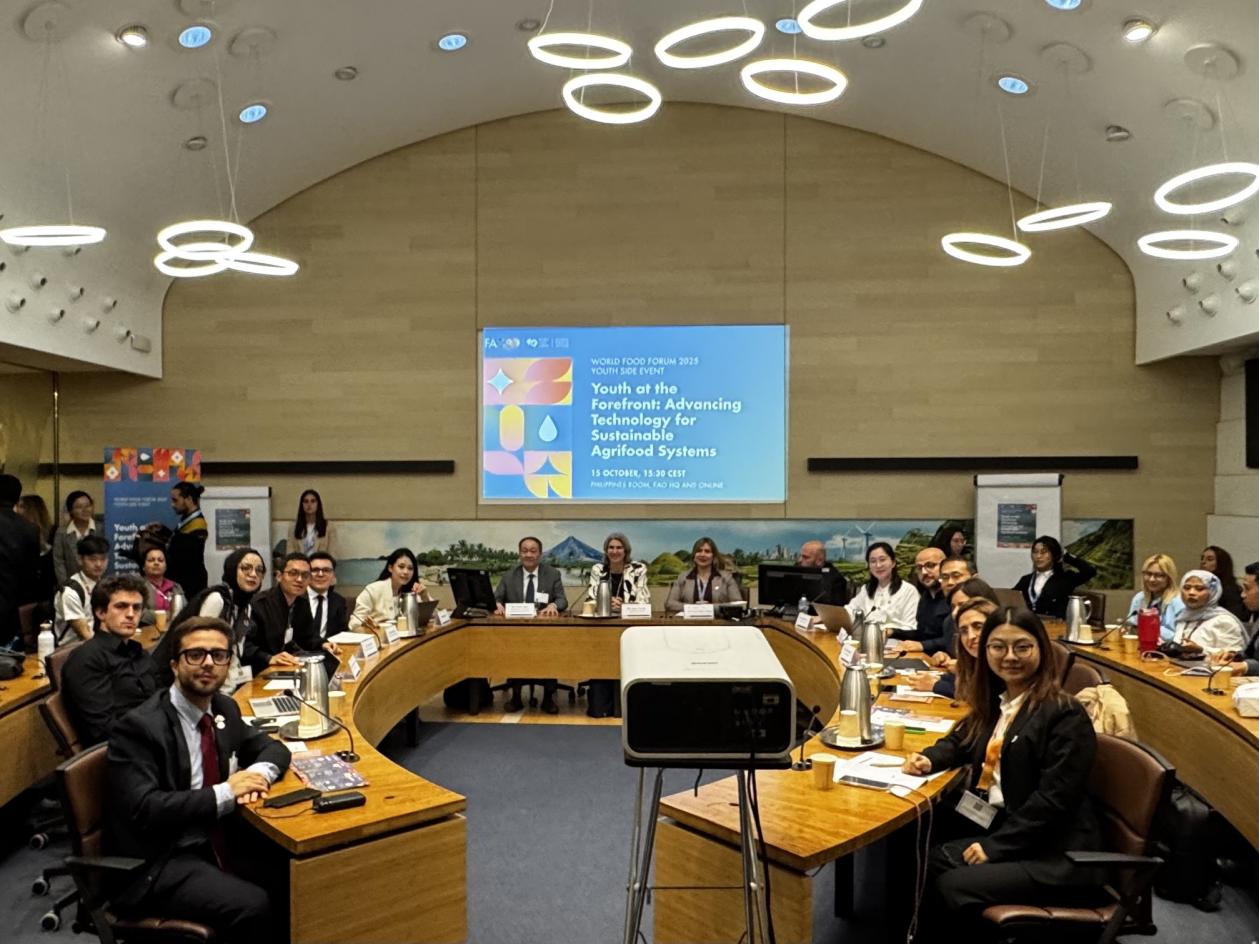
A group photo of side event participants (Photo by Yang Jianxiong / Tsinghua University)
Shared vision for a hunger-free future
Held against the backdrop of ongoing global food-security challenges—with an estimated 18 million people worldwide still facing hunger—the event focused on the theme “Uniting Digital Power, Empowering Youth, and Building Resilient Agrifood Systems.” It aimed to explore practical ways to align technological innovation, cross-sector partnerships and youth engagement with the 2030 Agenda for Sustainable Development.
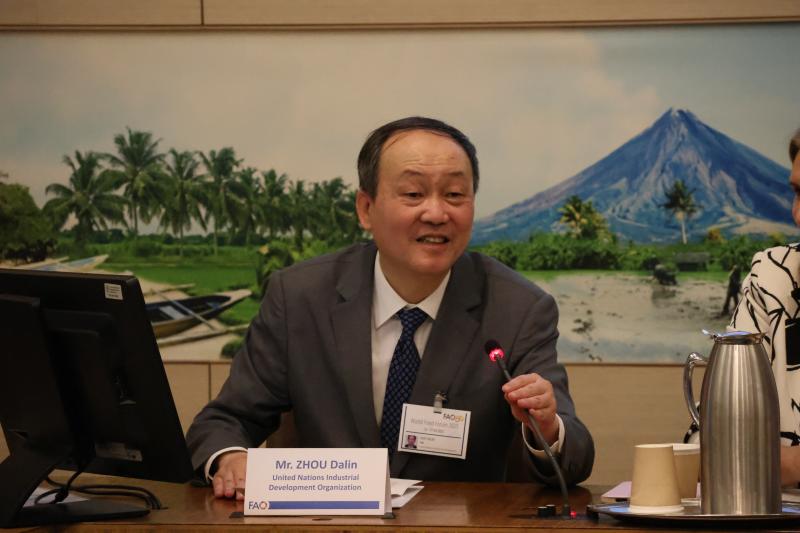
Zhou Dalin delivers opening remarks. (Photo by Yang Jianxiong / Tsinghua University)
Zhou Dalin, chief technical advisor at the Department of Agribusiness of UNIDO, opened the session by stressing that digital transformation is no longer optional but essential. “Technology offers enormous potential to improve resource efficiency and build climate-resilient systems,” he said, adding that inclusive digitalization requires cooperation across governments, academia, business and civil society.
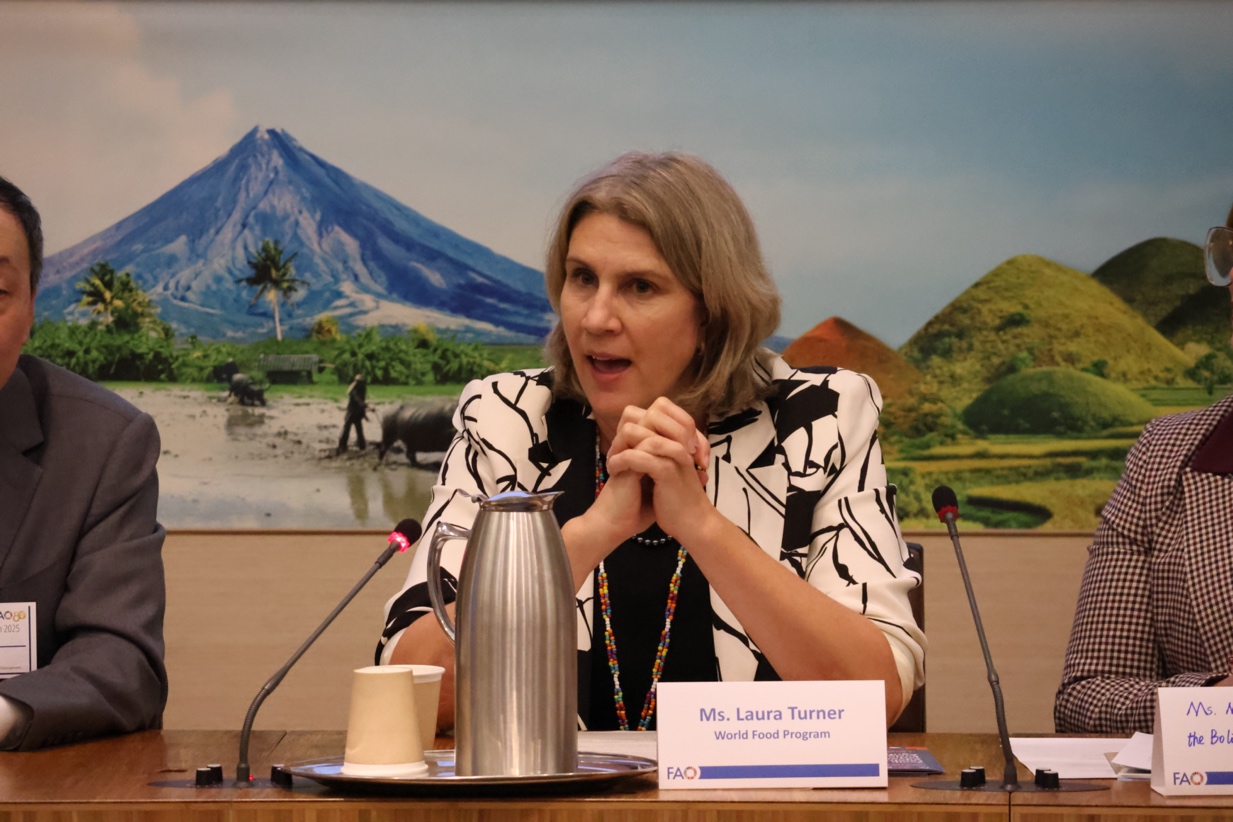
Laura Turner delivers opening remarks. (Photo by Yang Jianxiong / Tsinghua University)
Laura Turner, deputy director of the Multilateral and Program Country Partnership Division of the World Food Programme, highlighted that nearly half the world’s population is under 30. “The vision and creativity of young people are key to reshaping food systems,” she said, citing youth-developed apps in Kenya that help farmers respond to climate events and improve yields.
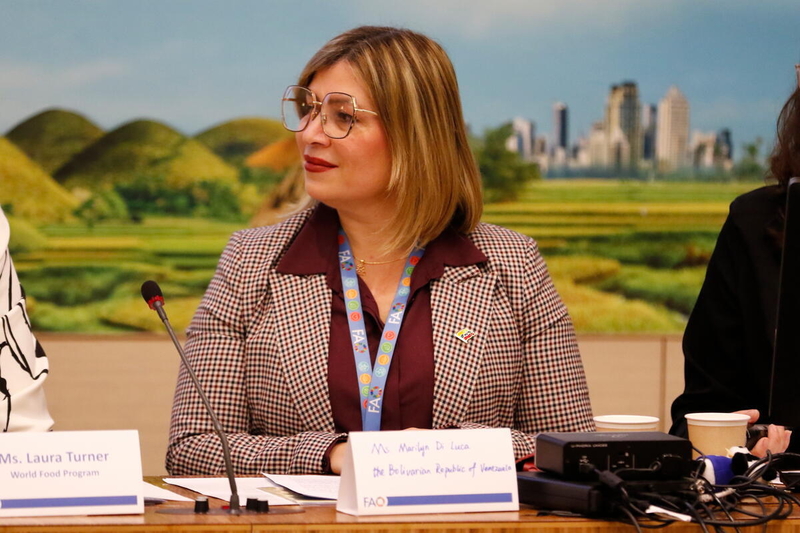
Marlene Di Luca, ambassador of the Bolivarian Republic of Venezuela to FAO
(Photo by Yang Jianxiong / Tsinghua University)
Marlene Di Luca, ambassador of the Bolivarian Republic of Venezuela to FAO, shared her country’s “Science, Technology and Innovation for Life” initiative, which integrates technology and ethics to foster socially responsible professionals and protect ancestral seeds. She underlined that Venezuela’s South-South cooperation approach resonates with China’s efforts to promote digital agriculture balancing human and ecological needs.
Experts share digital pathways for transformation
Moderated by Professor Huang Cheng, director for Global Competence Development at Tsinghua University, the panel discussion gathered experts from Europe and Asia to exchange insights on challenges and opportunities in digital agriculture.
Nicola Kendoff, senior digital agriculture and innovation specialist, identified three major obstacles: inadequate rural infrastructure and digital-literacy gaps, limited innovation ecosystems, and the mismatch between digital products and farmers’ actual needs. He called on young people to become “innovation prophets,” bridging technology with communities—especially young women in rural areas.
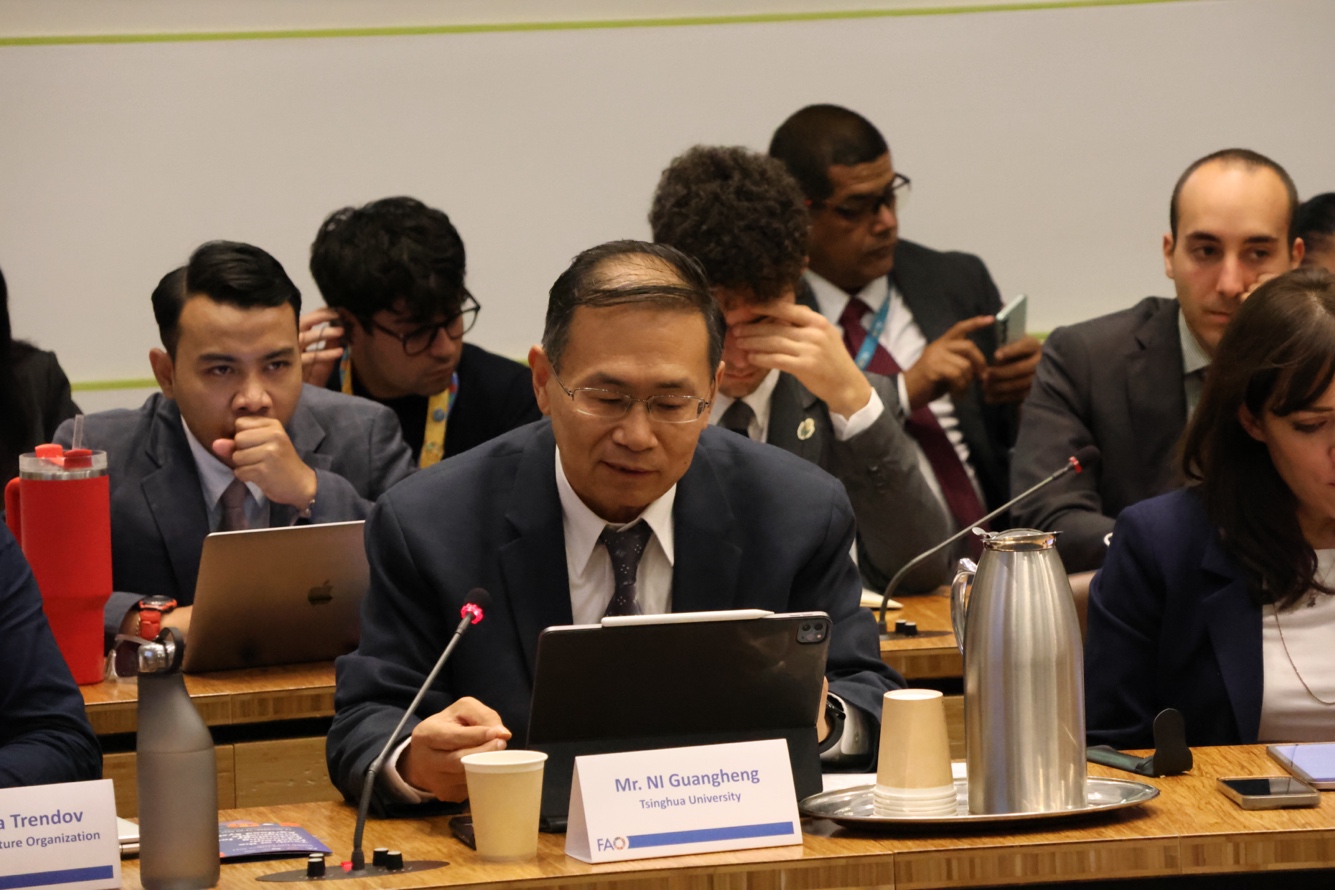
Professor Ni Guangheng shares smart agriculture. (Photo by Yang Jianxiong / Tsinghua University)
Professor Ni Guangheng of Tsinghua University showcased the frontier of smart agriculture, including integrated sensor networks, robotics addressing labor shortages, and large-language models serving as “digital brains” to simulate farming systems for precision decision-making.
From the University of Tuscia, Professor Flavia Tauro emphasized the importance of harmonizing multi-source hydrological data to enhance drought prediction and water-management capacity, encouraging youth participation in global research initiatives.
Chiara Carbo, director of the Market Observatory, introduced evidence-based evaluation tools used across more than 30 European projects to assess the cost-benefit and sustainability impact of digital solutions—valuable frameworks for scaling innovation.
Youth-centric, action-oriented dialogue
Throughout the session, speakers and participants highlighted youth as the driving force of agrifood transformation. The event’s interactive design—including a cross-sector introduction session —fostered lively discussion and practical collaboration.
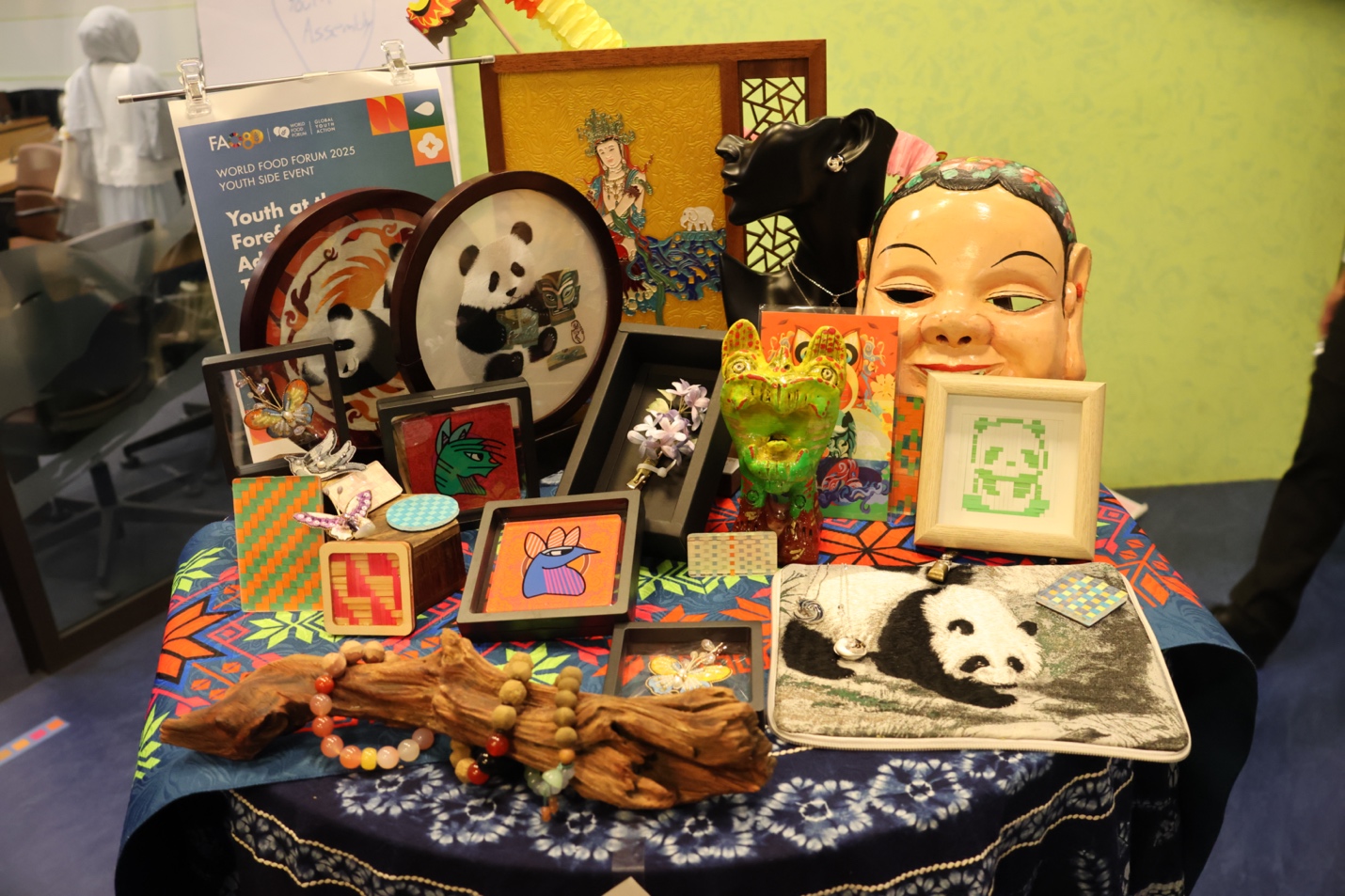
Special exhibition area established by the Rural Revitalization Center of Tsinghua University (Photo by Tang Xi / Tsinghua University)
Tsinghua’s Rural Revitalization Workstation also presented its “Rural-Innovation+” exhibition in FAO’s central hall, showcasing student-led projects on smart irrigation, AI pest detection and circular-economy solutions. The initiative echoed China’s policy emphasis at the Fourth Plenary Session of the 20th CPC Central Committee, which prioritised comprehensive rural vitalization and the advancement of agricultural modernization.
Multilateral cooperation and China’s green transition
The event’s cooperative spirit found resonance in wider multilateral efforts. In July 2025, Beijing hosted an APEC seminar on “Promoting Green Jobs and Resilient Development,” gathering delegates from 14 economies to promote sustainable entrepreneurship and cross-border skills training.
At the same time, China’s domestic green transition is gaining pace: during the 14th Five-Year Plan period, energy consumption per unit of GDP dropped by 11.6 percent, creating hundreds of thousands of new green jobs and driving innovation across the agrifood value chain.
These trends demonstrate that youth innovation and green development are converging into a shared agenda of growth, inclusion and sustainability.
From dialogue to action
The side event concluded with a shared commitment to turn discussion into practice. Participants agreed to strengthen cooperation, expand digital-technology access, and invest in youth capacity building. As FAO marks its 80th anniversary, initiatives like this side event illustrate how ideas become action: by empowering young people, integrating technology, and fostering multilateral partnerships, the global community can move closer to a hunger-free and sustainable future.